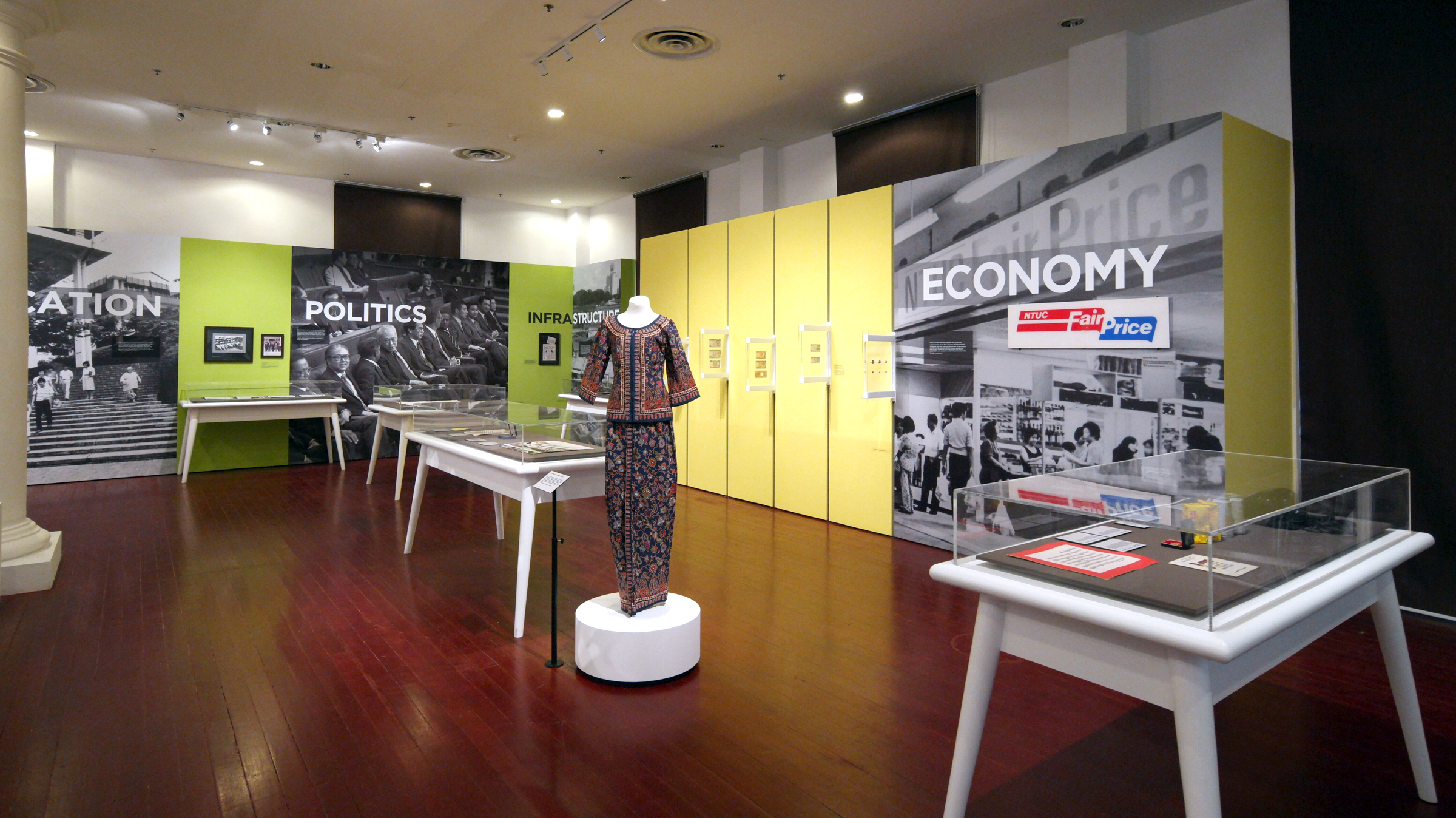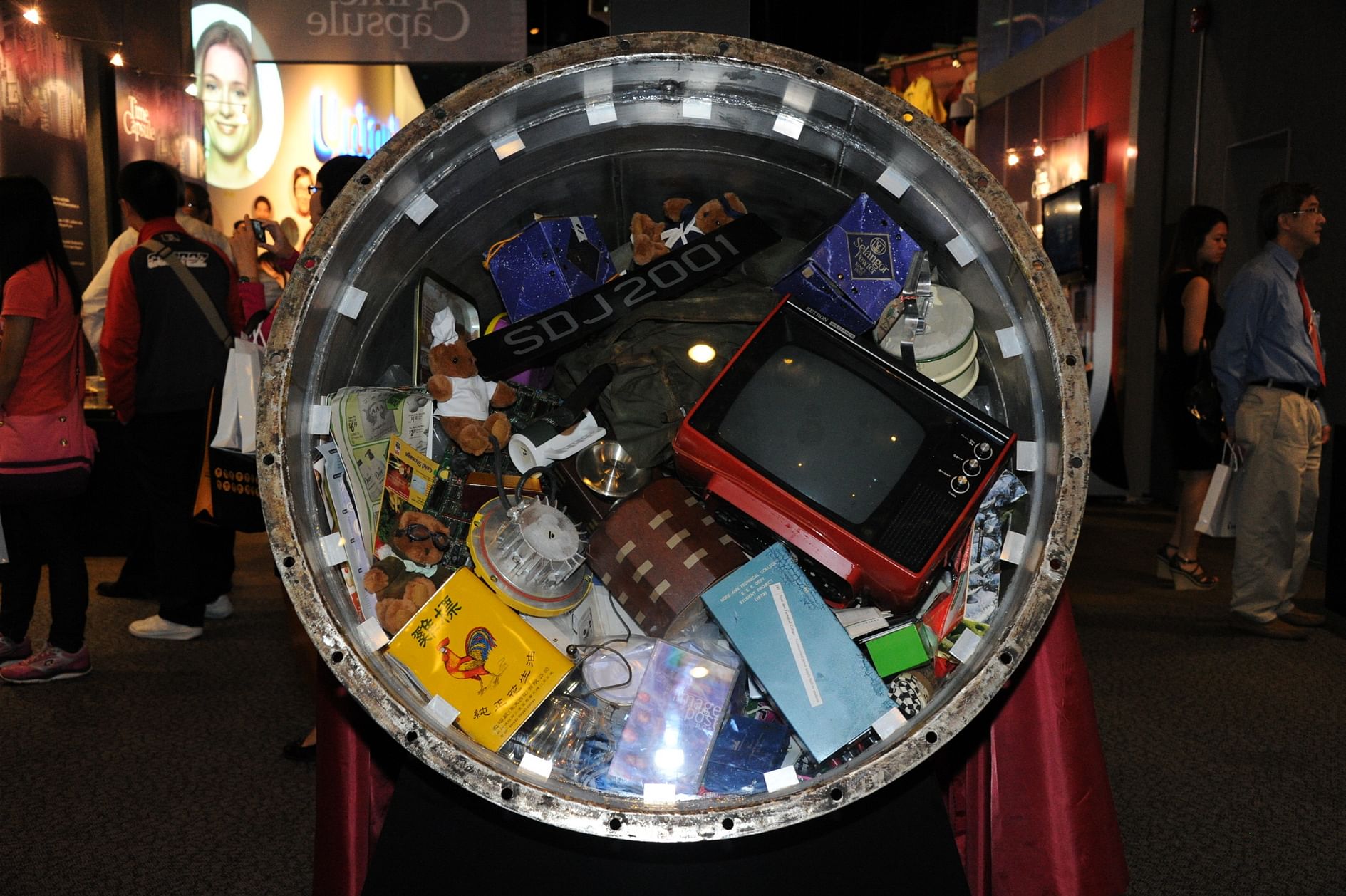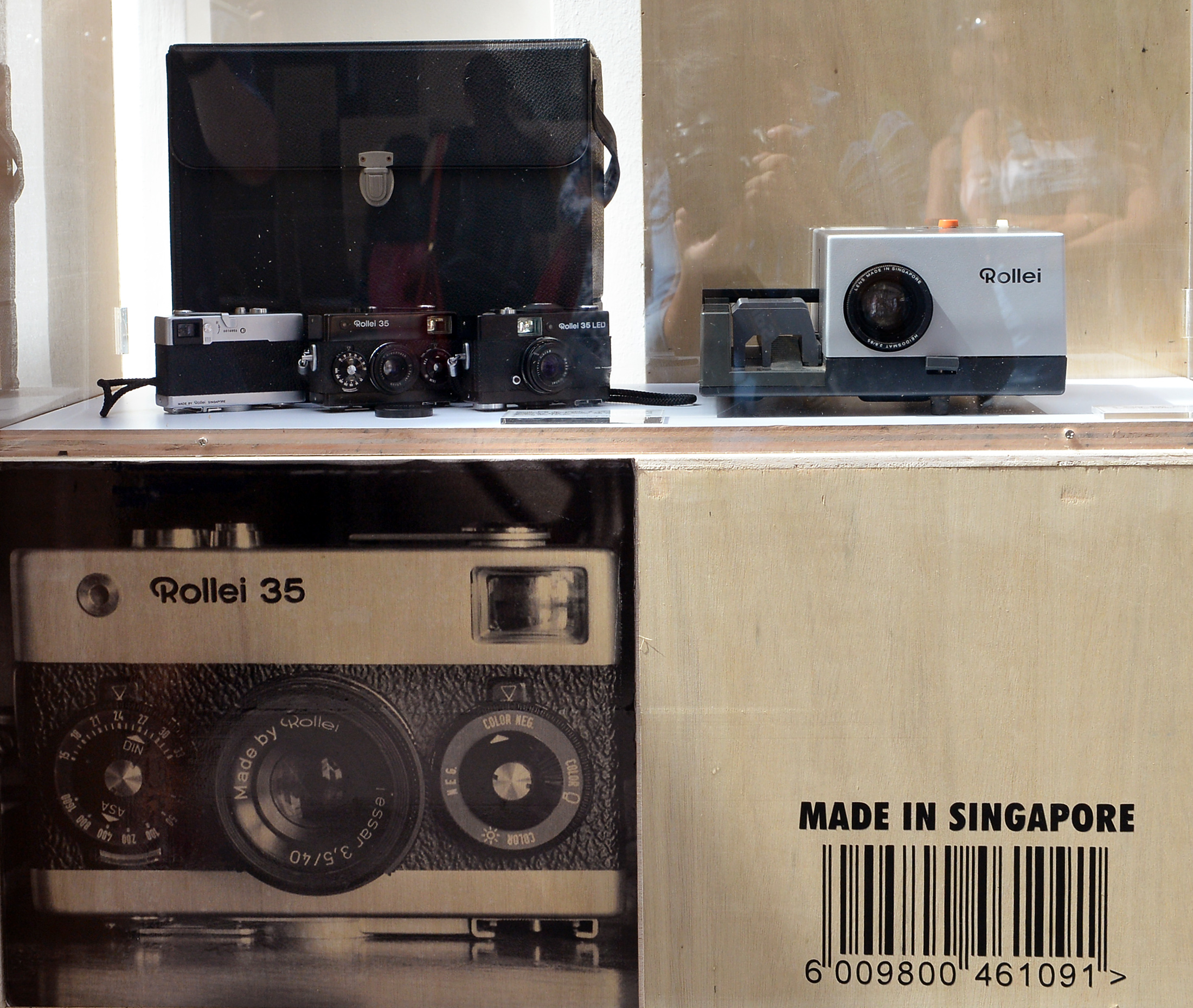6 interesting facts about SG50 and other time capsules unearthed
Sign up now: Get ST's newsletters delivered to your inbox
Chew Hui Min
Follow topic:
SINGAPORE - In the year 2065, Singaporeans will be cracking open an SG50 time capsule containing 50 items voted by the public as representative of Singapore.
The box of historical items was officially sealed by Prime Minister Lee Hsien Loong at a ceremony at Gardens by the Bay on Friday (March 18).
The objects sealed away are nods to nostalgia, including a ticket to the 1994 Malaysia Cup football final, an old National Library membership card, and a coffee sock used in local coffee shops. These will be retrieved in time for SG100.
Time capsules were popularised in the 1930s, and the practice has survived the test of time.
The Straits Times unearths some interesting facts about time capsules buried in our past:
1. Singapore's oldest known time capsule
In June 2016, workers restoring the Cathedral of the Good Shepherd - Singapore's oldest Catholic church - unearthed a 173-year-old time capsule in what experts describe as a "rare discovery". The time capsule was set in 1843 and contains publications such as a prayer booklet and newspapers from 1843, as well as 24 international 18th- and 19th-century coins and tokens.
Prior to the discovery of the cathedral's time capsule, the oldest one was thought to have been one from British colonial times that is buried under the foundation stone of the National Gallery Singapore, formerly the Supreme Court Building.
It contains some Singapore newspapers dating back to March 31, 1937, and a handful of Straits Settlements coins.
No one alive today is likely to see it as it is scheduled to be opened only in the year 3000.
2. The missing time capsule

It's buried, and literally forgotten.
The building plans of the former National Stadium, newspapers dated Feb 23, 1970 and Singapore notes of the era are some of the items that have been lost, possibly forever, along with a time capsule that was buried under the old stadium's foundation stone.
The copper cylinder was laid in 1970 by one of Singapore's founding leaders, Dr Goh Keng Swee.
It was carried from Empress Place to the site of the National Stadium by a team of runners.
But even former high-jump champion Nor Azahar Hamid, who ran the last leg of the race in 1970, cannot remember where exactly it was buried.
Reports said it is believed to be under the demolished stadium's west entrance.
The stadium is now no more, and despite efforts to turn over every stone at the site in Kallang, it appears that the capsule has also vanished.
Metal detectors proved not up to the task, and a $50,000 was even offered for any worker who found the capsule, but there were no takers.
There is a new time capsule for the Sports Hub that will be unearthed in 2040. The running shoes worn by national sprinter Shanti Pereira and Paralympian Jovin Tan's signature sunglasses are among 50 items that were sealed for posterity.
3. The lost-and-then-found time capsule
That's not the only time a time capsule was forgotten.
Back in 1990, staff at AIA were pleasantly surprised when a time capsule from the 1950s was discovered by contractors.
The copper canister, buried on April 26, 1956, was found in a foundation stone of the demolished American Insurance building in Robinson Road.
Among the items found: English and Chinese newspapers, a financial report, copies of photographs and posters. There were also an agent's manual and a financial report of the American International Assurance Company with the figures in British pounds.
Before the find, no one had the faintest idea where it was, a spokesman said then.
4. The SG25 time capsule

The SG50 time capsule replaces one that was buried in 1990, and dug up in time for Singapore's 50th year of independence.
Back then, 88 "symbols of progress" were buried as part of celebrations for Singapore's 25th anniversary.
The stainless steel cylinder was buried by then Deputy Prime Minister Ong Teng Cheong outside Empress Place.
Interesting items included a video tape of the first National Day Parade in 1966, water from the Singapore River, a branch from the first tree planted on the first Tree Planting Day in 1963, and the first Singapore Airlines sarong kebaya uniforms, designed by Pierre Balmain in 1968.
The unearthed items were displayed in an exhibition at the Asian Civilisations Museum last year.
5. The tech 'time warp'

The Science Time Capsule is one that has been accumulating gadgets and items of technological significance to Singapore since 1973.
By 2013, it had been opened thrice, and each time, in 1983, 2001 and 2013, more items were added.
The time capsule was first laid in 1973 by then Science and Technology Minister Toh Chin Chye with the foundation stone of the Science Centre Singapore.
But so many items were added that the original was replaced with another container.
The stainless steel capsule has at least 800 items in it, preserved in nitrogen. The inert gas helps to extend the lifespan of the contents.

Part of the original 1973 collection is a Rollei 35 miniature viewfinder film camera that was made in Singapore for the global market. In 1983, a Sanyo watch TV was added.
It is scheduled to be opened again when the Science Centre marks its 50th anniversary in 2027.
6. First time capsule?
It's not known when the first time capsule was buried, since the concept appears to have been around for a while.
But the term "time capsule" was coined by George Edward Pendray, as a way to drum up publicity for Westinghouse Electric at the 1939 New York World's Fair.
The capsule, created by Westinghouse as part of the fair's exhibits, contained everyday items and records fitted into a 2.3m long rocket-shaped container. It is to be opened in 6939, 5000 years after it was sealed.
Another candidate for world's first modern time capsule is a room at the Oglethorpe University in Georgia, United States. This 'Crypt of Civilisation' is inspired by the pyramids of Egypt, which preserved artefacts from ancient civilisations for the future.
The contents of the 6m by 3m room, sealed in 1940, is meant to provide a thorough record of life in the twentieth century for future historians. It is not to be opened until May 28, 8113.
Time capsules from as early as the late 1700s have been found. The oldest one found in the US was located in a cornerstone of the Massachusetts State House, buried in 1795 by revolutionary war heroes Samuel Adams and Paul Revere.

